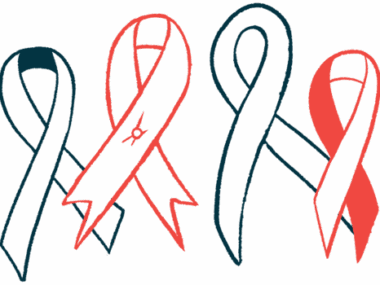Putting a spotlight on patients this Porphyria Awareness Week
Written by |

For this year’s Porphyria Awareness Week (PAW), running April 15-22, the American Porphyria Foundation (APF) is putting a spotlight on those individuals with a rare genetic disease that falls under the disorder’s umbrella.
The goal is to increase awareness of porphyria among the public, as well as advocate for patients with lawmakers, healthcare professionals, scientists, industry representatives, and other stakeholders.
Global Porphyria Day is on April 19.
For its part, the APF is offering a variety of ways to get involved in the week themed “Spotlight Porphyria.” The event aims to call attention not only to the disorder, but also to the patients, caregivers, and others impacted by the disease, which is caused by disruptions in the heme production cycle. In the body, heme enables the transportation of oxygen via red blood cells.
“Together let’s put a spotlight on porphyria to create awareness for all people impacted by porphyria, including those who cannot be in the light,” the organization states on its Porphyria Awareness Week 2023 webpage.
On April 15 at 1 p.m. ET, the APF will offer a Zoom presentation titled “Spotlight on Acute Porphyrias,” featuring Roy E. Smith, MD, of the University of Pittsburgh School of Medicine. There will be a question-and-answer session and patients will be on hand to share their stories. Anyone interested can register by sending an email, along with any questions for Smith, to [email protected].
Together let’s put a spotlight on porphyria to create awareness for all people impacted by porphyria, including those who cannot be in the light.
Also for the week, the organization is encouraging those living with porphyria to participate in “Satisfy the Soul Sunday,” a day set aside for reflections on life and its blessings. On “Motivational Monday,” patients are asked to share porphyria coping tips on their social media platforms, as well as the video “Two of Me,” about seven people around the world living with acute hepatic porphyria.
Then, on “Talk Tuesday,” April 18, there will be another Zoom presentation, this one featuring acute intermittent porphyria patient Nicole Castellano. Others with the disease are invited to join “Let’s Talk Porphyria” with stories about impediments to diagnosis and treatment.
On “Wear a Hat” Wednesday, the aim is to have all children wear hats to school in solidarity with children with erythropoietic protoporphyria, who are deleteriously affected by exposure to bright sunlight. On the following day, “Tell Your Story Thursday,” patients are asked to speak with their local media about their porphyria journey, and to share educational materials with physicians and other healthcare professionals.
For “Find a Friend Friday,” the APF is encouraging membership in Porphyria Partners, a program the organization initiated during the COVID-19 pandemic to offset patient loneliness and isolation. Finally, on “Show Your Color Purple Saturday,” supporters are asked to don something purple — the color that represents porphyria.
For Global Porphyria Day, the Global Porphyria Advocacy Coalition (GPAC) is offering several ways to participate in awareness events, including by viewing a series of videos about the disorder. As part of the #MyPorphyria campaign, the videos will feature patients who will compare their journeys with how the disease is commonly described in medical terms. The first video will premier on April 19.
GPAC also will offer supporters a host of Global Porphyria Day materials, as well as a downloadable tool kit for use with the hashtags #MyPorphyria, #GPD2023, and #PurpleForPorphyria.
In addition, the United Porphyrias Association is working with patient advocacy groups globally to mark April 19.
“Watch out for a special edition of eNews & follow us on social media to find out how you can get involved in this year’s #MyPorphyria campaign,” the organization states on a webpage.





